Haiyang Zhang
Benchmarking and Improving LVLMs on Event Extraction from Multimedia Documents
Sep 16, 2025Abstract:The proliferation of multimedia content necessitates the development of effective Multimedia Event Extraction (M2E2) systems. Though Large Vision-Language Models (LVLMs) have shown strong cross-modal capabilities, their utility in the M2E2 task remains underexplored. In this paper, we present the first systematic evaluation of representative LVLMs, including DeepSeek-VL2 and the Qwen-VL series, on the M2E2 dataset. Our evaluations cover text-only, image-only, and cross-media subtasks, assessed under both few-shot prompting and fine-tuning settings. Our key findings highlight the following valuable insights: (1) Few-shot LVLMs perform notably better on visual tasks but struggle significantly with textual tasks; (2) Fine-tuning LVLMs with LoRA substantially enhances model performance; and (3) LVLMs exhibit strong synergy when combining modalities, achieving superior performance in cross-modal settings. We further provide a detailed error analysis to reveal persistent challenges in areas such as semantic precision, localization, and cross-modal grounding, which remain critical obstacles for advancing M2E2 capabilities.
Attribute Guidance With Inherent Pseudo-label For Occluded Person Re-identification
Aug 07, 2025Abstract:Person re-identification (Re-ID) aims to match person images across different camera views, with occluded Re-ID addressing scenarios where pedestrians are partially visible. While pre-trained vision-language models have shown effectiveness in Re-ID tasks, they face significant challenges in occluded scenarios by focusing on holistic image semantics while neglecting fine-grained attribute information. This limitation becomes particularly evident when dealing with partially occluded pedestrians or when distinguishing between individuals with subtle appearance differences. To address this limitation, we propose Attribute-Guide ReID (AG-ReID), a novel framework that leverages pre-trained models' inherent capabilities to extract fine-grained semantic attributes without additional data or annotations. Our framework operates through a two-stage process: first generating attribute pseudo-labels that capture subtle visual characteristics, then introducing a dual-guidance mechanism that combines holistic and fine-grained attribute information to enhance image feature extraction. Extensive experiments demonstrate that AG-ReID achieves state-of-the-art results on multiple widely-used Re-ID datasets, showing significant improvements in handling occlusions and subtle attribute differences while maintaining competitive performance on standard Re-ID scenarios.
Hybrid RISs for Simultaneous Tunable Reflections and Sensing
Jul 22, 2025Abstract:The concept of smart wireless environments envisions dynamic programmable propagation of information-bearing signals through the deployment of Reconfigurable Intelligent Surfaces (RISs). Typical RIS implementations include metasurfaces with passive unit elements capable to reflect their incident waves in controllable ways. However, this solely reflective operation induces significant challenges in the RIS orchestration from the wireless network. For example, channel estimation, which is essential for coherent RIS-empowered wireless communications, is quite challenging with the available solely reflecting RIS designs. This chapter reviews the emerging concept of Hybrid Reflecting and Sensing RISs (HRISs), which enables metasurfaces to reflect the impinging signal in a controllable manner, while simultaneously sensing a portion of it. The sensing capability of HRISs facilitates various network management functionalities, including channel parameter estimation and localization, while, most importantly, giving rise to computationally autonomous and self-configuring RISs. The implementation details of HRISs are first presented, which are then followed by a convenient mathematical model for characterizing their dual functionality. Then, two indicative applications of HRISs are discussed, one for simultaneous communications and sensing and another that showcases their usefulness for estimating the individual channels in the uplink of a multi-user HRIS-empowered communication system. For both of these applications, performance evaluation results are included validating the role of HRISs for sensing as well as integrated sensing and communications.
Lost in Pronunciation: Detecting Chinese Offensive Language Disguised by Phonetic Cloaking Replacement
Jul 10, 2025Abstract:Phonetic Cloaking Replacement (PCR), defined as the deliberate use of homophonic or near-homophonic variants to hide toxic intent, has become a major obstacle to Chinese content moderation. While this problem is well-recognized, existing evaluations predominantly rely on rule-based, synthetic perturbations that ignore the creativity of real users. We organize PCR into a four-way surface-form taxonomy and compile \ours, a dataset of 500 naturally occurring, phonetically cloaked offensive posts gathered from the RedNote platform. Benchmarking state-of-the-art LLMs on this dataset exposes a serious weakness: the best model reaches only an F1-score of 0.672, and zero-shot chain-of-thought prompting pushes performance even lower. Guided by error analysis, we revisit a Pinyin-based prompting strategy that earlier studies judged ineffective and show that it recovers much of the lost accuracy. This study offers the first comprehensive taxonomy of Chinese PCR, a realistic benchmark that reveals current detectors' limits, and a lightweight mitigation technique that advances research on robust toxicity detection.
EcomScriptBench: A Multi-task Benchmark for E-commerce Script Planning via Step-wise Intention-Driven Product Association
May 21, 2025Abstract:Goal-oriented script planning, or the ability to devise coherent sequences of actions toward specific goals, is commonly employed by humans to plan for typical activities. In e-commerce, customers increasingly seek LLM-based assistants to generate scripts and recommend products at each step, thereby facilitating convenient and efficient shopping experiences. However, this capability remains underexplored due to several challenges, including the inability of LLMs to simultaneously conduct script planning and product retrieval, difficulties in matching products caused by semantic discrepancies between planned actions and search queries, and a lack of methods and benchmark data for evaluation. In this paper, we step forward by formally defining the task of E-commerce Script Planning (EcomScript) as three sequential subtasks. We propose a novel framework that enables the scalable generation of product-enriched scripts by associating products with each step based on the semantic similarity between the actions and their purchase intentions. By applying our framework to real-world e-commerce data, we construct the very first large-scale EcomScript dataset, EcomScriptBench, which includes 605,229 scripts sourced from 2.4 million products. Human annotations are then conducted to provide gold labels for a sampled subset, forming an evaluation benchmark. Extensive experiments reveal that current (L)LMs face significant challenges with EcomScript tasks, even after fine-tuning, while injecting product purchase intentions improves their performance.
Language-based Audio Retrieval with Co-Attention Networks
Dec 30, 2024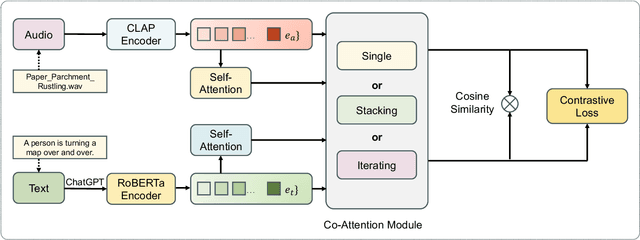
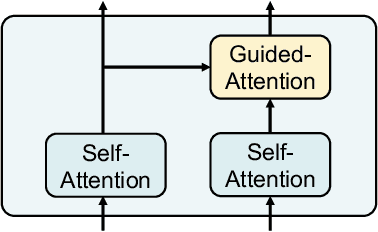
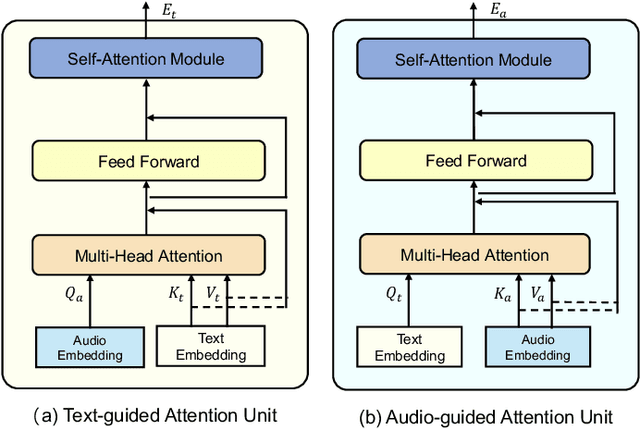
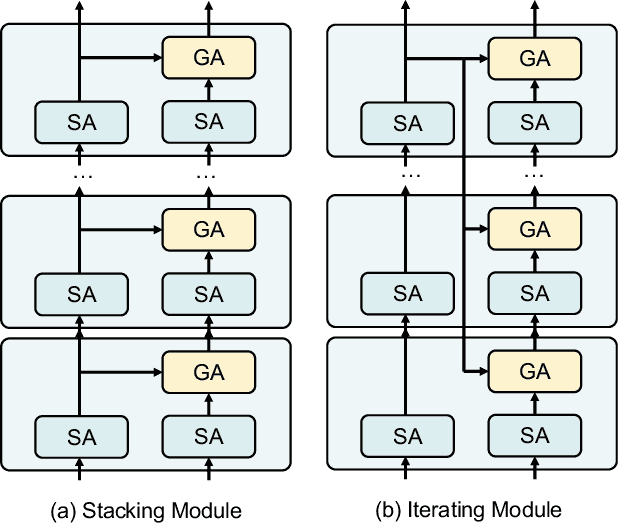
Abstract:In recent years, user-generated audio content has proliferated across various media platforms, creating a growing need for efficient retrieval methods that allow users to search for audio clips using natural language queries. This task, known as language-based audio retrieval, presents significant challenges due to the complexity of learning semantic representations from heterogeneous data across both text and audio modalities. In this work, we introduce a novel framework for the language-based audio retrieval task that leverages co-attention mechanismto jointly learn meaningful representations from both modalities. To enhance the model's ability to capture fine-grained cross-modal interactions, we propose a cascaded co-attention architecture, where co-attention modules are stacked or iterated to progressively refine the semantic alignment between text and audio. Experiments conducted on two public datasets show that the proposed method can achieve better performance than the state-of-the-art method. Specifically, our best performed co-attention model achieves a 16.6% improvement in mean Average Precision on Clotho dataset, and a 15.1% improvement on AudioCaps.
Domain-specific Guided Summarization for Mental Health Posts
Nov 03, 2024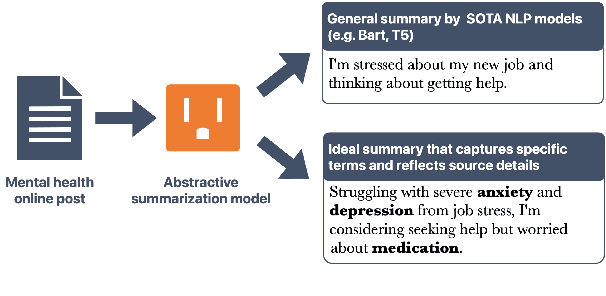



Abstract:In domain-specific contexts, particularly mental health, abstractive summarization requires advanced techniques adept at handling specialized content to generate domain-relevant and faithful summaries. In response to this, we introduce a guided summarizer equipped with a dual-encoder and an adapted decoder that utilizes novel domain-specific guidance signals, i.e., mental health terminologies and contextually rich sentences from the source document, to enhance its capacity to align closely with the content and context of guidance, thereby generating a domain-relevant summary. Additionally, we present a post-editing correction model to rectify errors in the generated summary, thus enhancing its consistency with the original content in detail. Evaluation on the MentSum dataset reveals that our model outperforms existing baseline models in terms of both ROUGE and FactCC scores. Although the experiments are specifically designed for mental health posts, the methodology we've developed offers broad applicability, highlighting its versatility and effectiveness in producing high-quality domain-specific summaries.
A Dual Adaptive Assignment Approach for Robust Graph-Based Clustering
Oct 29, 2024



Abstract:Graph clustering is an essential aspect of network analysis that involves grouping nodes into separate clusters. Recent developments in deep learning have resulted in advanced deep graph clustering techniques, which have proven effective in many applications. Nonetheless, these methods often encounter difficulties when dealing with the complexities of real-world graphs, particularly in the presence of noisy edges. Additionally, many denoising graph clustering strategies tend to suffer from lower performance compared to their non-denoised counterparts, training instability, and challenges in scaling to large datasets. To tackle these issues, we introduce a new framework called the Dual Adaptive Assignment Approach for Robust Graph-Based Clustering (RDSA). RDSA consists of three key components: (i) a node embedding module that effectively integrates the graph's topological features and node attributes; (ii) a structure-based soft assignment module that improves graph modularity by utilizing an affinity matrix for node assignments; and (iii) a node-based soft assignment module that identifies community landmarks and refines node assignments to enhance the model's robustness. We assess RDSA on various real-world datasets, demonstrating its superior performance relative to existing state-of-the-art methods. Our findings indicate that RDSA provides robust clustering across different graph types, excelling in clustering effectiveness and robustness, including adaptability to noise, stability, and scalability.
Text-Guided Attention is All You Need for Zero-Shot Robustness in Vision-Language Models
Oct 29, 2024Abstract:Due to the impressive zero-shot capabilities, pre-trained vision-language models (e.g. CLIP), have attracted widespread attention and adoption across various domains. Nonetheless, CLIP has been observed to be susceptible to adversarial examples. Through experimental analysis, we have observed a phenomenon wherein adversarial perturbations induce shifts in text-guided attention. Building upon this observation, we propose a simple yet effective strategy: __Text-Guided Attention for Zero-Shot Robustness (TGA-ZSR)__. This framework incorporates two components: the Attention Refinement module and the Attention-based Model Constraint module. Our goal is to maintain the generalization of the CLIP model and enhance its adversarial robustness: The Attention Refinement module aligns the text-guided attention obtained from the target model via adversarial examples with the text-guided attention acquired from the original model via clean examples. This alignment enhances the model's robustness. Additionally, the Attention-based Model Constraint module acquires text-guided attention from both the target and original models using clean examples. Its objective is to maintain model performance on clean samples while enhancing overall robustness. The experiments validate that our method yields a 9.58\% enhancement in zero-shot robust accuracy over the current state-of-the-art techniques across 16 datasets. __Our code is available at__ https://github.com/zhyblue424/TGA-ZSR.
Identifying Influential nodes in Brain Networks via Self-Supervised Graph-Transformer
Sep 17, 2024


Abstract:Studying influential nodes (I-nodes) in brain networks is of great significance in the field of brain imaging. Most existing studies consider brain connectivity hubs as I-nodes. However, this approach relies heavily on prior knowledge from graph theory, which may overlook the intrinsic characteristics of the brain network, especially when its architecture is not fully understood. In contrast, self-supervised deep learning can learn meaningful representations directly from the data. This approach enables the exploration of I-nodes for brain networks, which is also lacking in current studies. This paper proposes a Self-Supervised Graph Reconstruction framework based on Graph-Transformer (SSGR-GT) to identify I-nodes, which has three main characteristics. First, as a self-supervised model, SSGR-GT extracts the importance of brain nodes to the reconstruction. Second, SSGR-GT uses Graph-Transformer, which is well-suited for extracting features from brain graphs, combining both local and global characteristics. Third, multimodal analysis of I-nodes uses graph-based fusion technology, combining functional and structural brain information. The I-nodes we obtained are distributed in critical areas such as the superior frontal lobe, lateral parietal lobe, and lateral occipital lobe, with a total of 56 identified across different experiments. These I-nodes are involved in more brain networks than other regions, have longer fiber connections, and occupy more central positions in structural connectivity. They also exhibit strong connectivity and high node efficiency in both functional and structural networks. Furthermore, there is a significant overlap between the I-nodes and both the structural and functional rich-club. These findings enhance our understanding of the I-nodes within the brain network, and provide new insights for future research in further understanding the brain working mechanisms.
 Add to Chrome
Add to Chrome Add to Firefox
Add to Firefox Add to Edge
Add to Edge